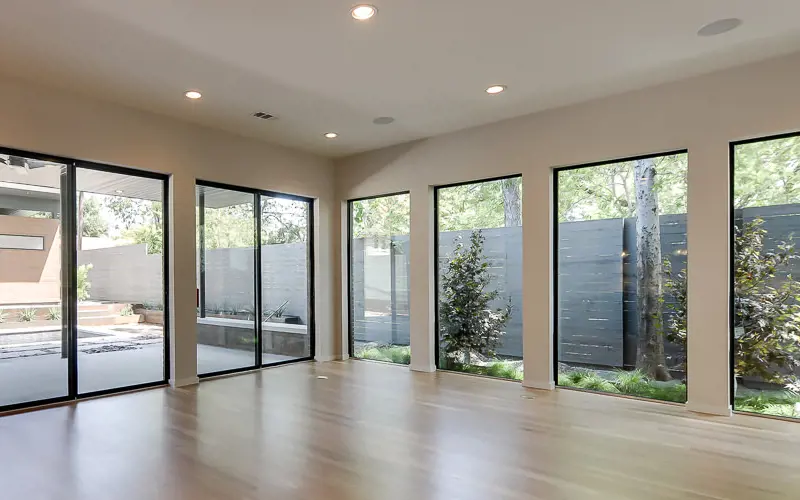
What Are Foam Filled Window Frames?
Heat gained and lost through our windows is compensated by our heating or cooling systems. Energy-efficient windows are just one way of improving the energy efficiency of our homes but a very valuable one since our homes have so many windows. Each of those windows openings is another pocket where air can enter our home and cause our heating and cooling systems to perform harder to provide us with the same level of comfort as they would in a home with fewer window air leaks.
There are a few ways to improve the thermal performance of your windows. In this article, we'll explain how foam filled frames can improve thermal performance.
How is heat transferred and why does it matter?

Photo Credit: Joel Prince / Staff Photographer at Dallas News.com
The glass and the frame of the window both determine the energy efficiency of the unit. Both the glass and frame are linked parts that lose heat through conduction, radiation, and convection. Each of these processes describes how heat travels.
Conduction is when heat travels through a solid material. On windows, conduction happens through each part of the window which is one reason why the material of the product is one consideration for homeowners interested in energy-efficient window units. Heat travels through our roof, walls, and windows but heat-reflecting building products can help us reduce heat conduction.
Radiation is the travel of visible and non-visible light. Radiation can carry heat from warm objects to cooler ones. Regarding window units, infrared radiation enters through the window glass and warms our homes. Shades and Low-E coatings are one way to block that radiation.
Convection describes heat traveling through the air. The heat that enters through our walls or through leaks and openings rises (in every direction, not just up) and circulates through the air.
What are foam-filled window frames?

Super Spacer sealant/foam featured on a double-pane window
Foam-filled window frames are window units whose frames are filled with foam. Frames can be filled by two methods. Spray foam can be injected into the extrusion or push-in foam can be cut and pushed into the extrusion.
Spray foam has a high density and can be a better insulator but spraying foam can be inconsistent. As the foam is sprayed into the window, air pockets can occur and this would produce an inconsistent fill.
Push-in foam can be less dense than spray foam but when done right, the foam is cut precisely to have a tight fit in the chamber of the window frame.
The type of glazing (glass) material, number of glass panes, the size of the cavity between glass panes, the gas used between glass panes, and the material of the frame all affect the overall thermal performance of a window unit.
Foam-filled frames are designed to minimize thermal transfer that happens through the window frame by minimizing convection in the hollow part of the frame. Foam-filled frames can provide additional insulation and strength to the window.
Regarding how energy efficiency is rated by ENERGY STAR, foam-filled window frames can affect the U-factor of the window unit. A low U-factor number indicates that the window has high insulating properties.
Are foam filled windows worth it?
The answer to that will always be "it depends". Foam-filled frames are certainly a benefit when it comes to improving the thermal performance of hollow-framed windows but they can come at an additional expense. You'll have to weigh that investment yourself but if it means bringing a window that doesn't meet energy code within an acceptable rating, it's definitely something to consider.
Oops!
We don't currently serve your area but do want to help you plan your project. Try our Build & Price tool to get an idea of window & door costs within DFW. Your area may be higher or lower but at least you'll have some idea of the price.
Thanks for stopping by.







